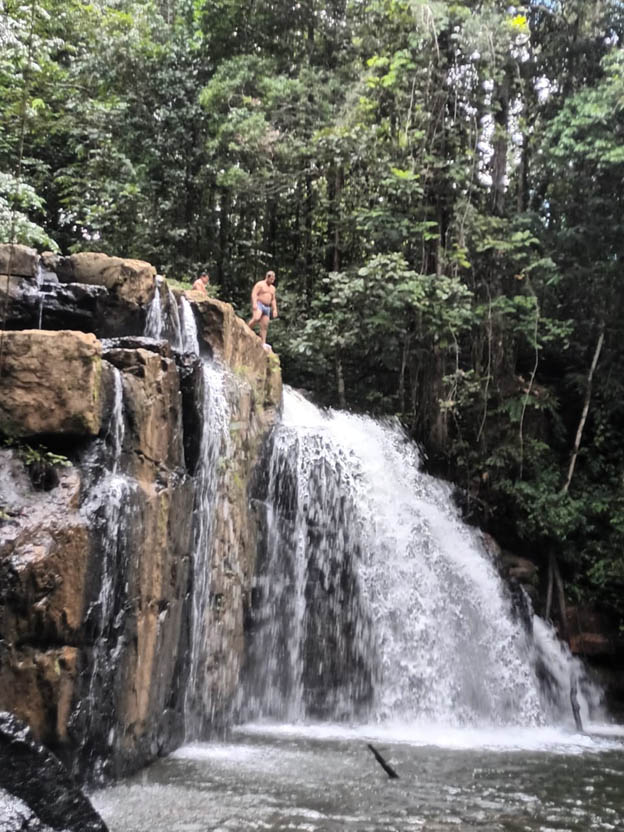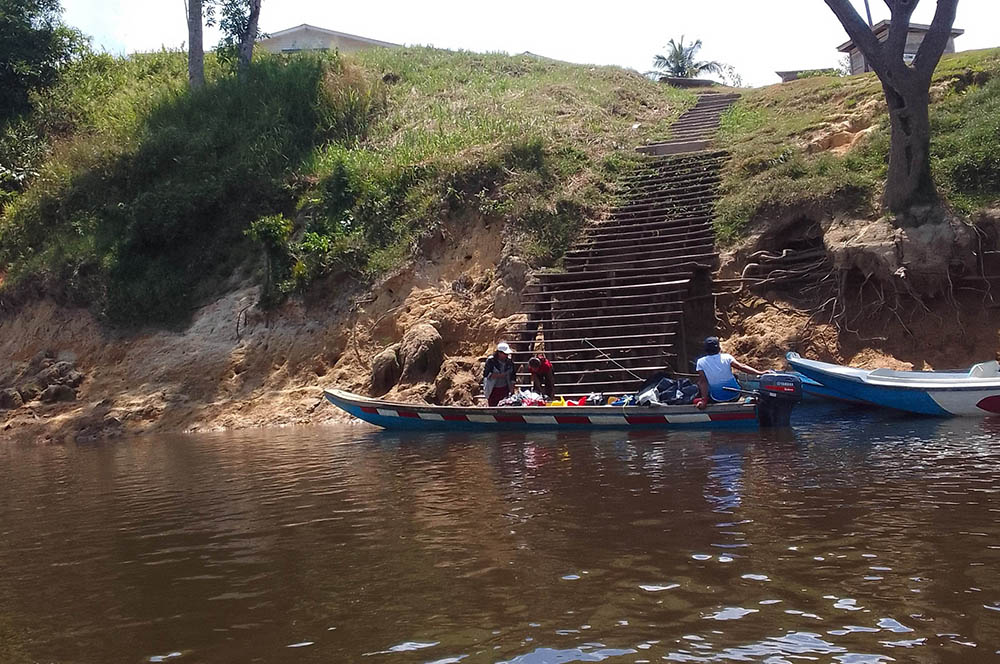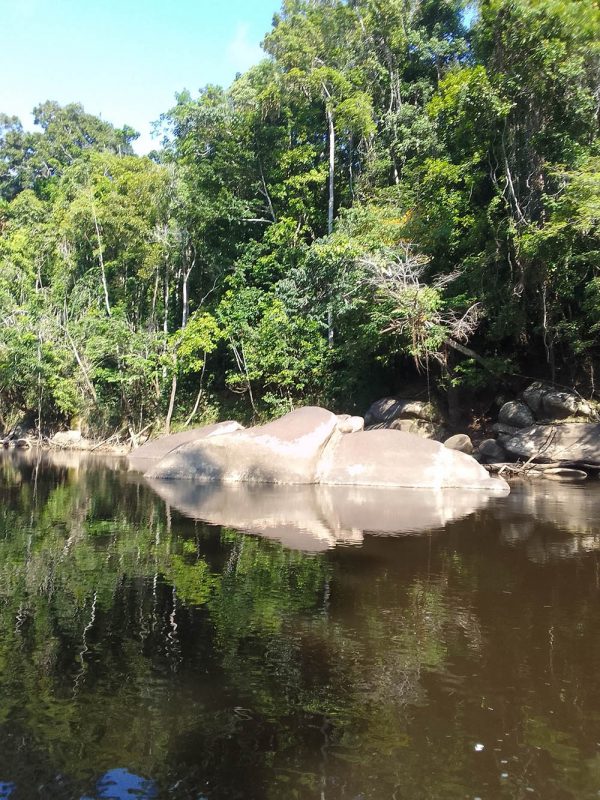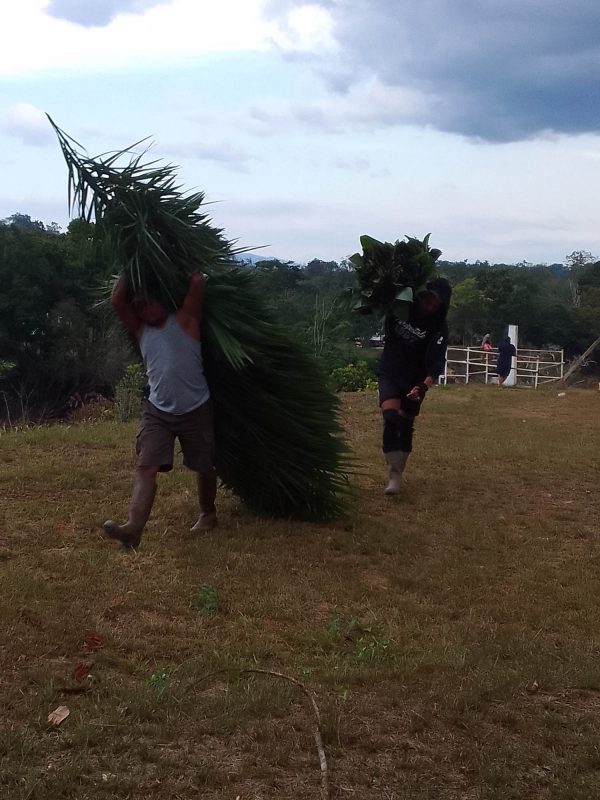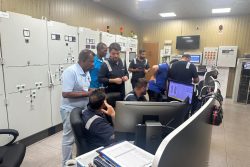The Kamarang/Warawatta Village are two distinct Amerindian villages situated at the confluence of the Kamarang and Mazaruni rivers which are conjoined administratively. Like the other twelve Amerindian villages located in Region Seven, in Upper Mazaruni, the others are Arau, Kaikan, Paruima, Waramadong, Kako, Jawalla, Philipai, Chinoweing, Imbaimadai and are home to the Arecuna and Akawaio tribes. The Kamarang/Warawatta administrative village accommodates around one thousand three hundred residents. Kamarang accommodates an administrative infrastructure that includes a hospital, a school, a police station, and modest business houses of various kinds run by coastlanders who have made the community their places of businesses. Most of the businesses ‘hug’ the airstrip, the means by which one gets in and out of Kamarang. The Stabroek Business had learnt before undertaking the trip to Kararang/Warawatta that its casareep ranks among the best in the business. Accordingly, we undertook the journey with Christmas (and more specifically, with Pepperpot) in mind. Contextually, we decided to probe the casareep story more deeply.
Our disappointment at having been told that we were late in asking and would have to ‘try again next year’ was somewhat assuaged by ‘news’ that there was a shop in the ‘Government Compound’ offering cassava bread, a kind of compensation, we thought. Upon inquiring, however, we were told that the cassava bread had been ‘imported’ from Georgetown. We were not about to go searching for cassava bread made by Amerindian hands’ in Amerindian Villages if all that we were likely to find was cassava bread that had been flown in from Georgetown. The scarcity of the product, we later learnt, had to do with a shortage of bitter cassava, a circumstance that had ‘driven up’ the price of cassava bread which meant that at Waramadong, which is about a two-hour drive in a boat fitted with 40hp engine, I was told that cassava bread was not ‘readily available’ and that even if you do find it will be double what had been the ‘going price’ of around “two for five hundred dollars.” Apparently, bitter cassava is scarce and as such, people are making cassava bread and casareep mostly for home use. I was given various reasons why there is a shortage of bitter cassava- and even ground provision… the lengthy dry season, I was told.
Puzzled by the news that with Christmas fast approaching Kamarang/Warawatta was facing a shortage of cassava bread I probed the matter with Toshoa Lemmel Benson Thomas who also serves as President of the Amerindian Peoples’ Association (APA) a non-governmental advocacy organization charged with helping to protect the rights of Amerindians across the country. Thomas attributed the scarcity of casareep and the attendant price hike in recent years to what he said had been an increase in the community’s wild hog population and the fact that the animals had settled on cassava as a preferred part of their diet. The farmers, over time, Thomas explained, had been unable to ‘persuade’ the wild hogs to significantly diversify their diet. There is, it seems, a strategic significance to the location of farms ‘quite a distance’ from homes at Kamarang/Warawatta. Toshao Thomas explained that ‘closer to home’ the soil is mostly laterite and, as a consequence, not the best for farming. Where water is concerned, the closer you are to the creeks the greater the risk of your crops being inundated by overtopping from the creeks during the rainy season.
When Stabroek Business visited the community the farmers there were experiencing a long dry spell, a circumstance that limited their yield almost entirely to meeting the needs of their respective kitchens. The ruinous nature of the acoushi ants (or leaf-cutting ants as they are called) pose a major threat to the agricultural pursuits of the farmers in the Kamarang/Warawatta community. The ants are voracious creatures which, we are told, can decimate a sizeable cassava crop overnight. Apparently, even as they feast on the cassava leaves they usually give the plantain and banana suckers a ‘wide berth.’ Toshoa Thomas provided a ‘briefing’ on some of the socio-economic transformations that have occurred in some Amerindian communities, over time. These past two years, he said, gold mining had “cooled down,” though some small miners still clung tenaciously to their ‘El Dorado’ dreams. Apparently, the vagaries of the weather have become increasingly challenging for small miners. When the rains are at ‘full throttle’ the miners must endure the costs associated with compulsory relocation. More than that, the removal of water from gold-bearing areas involves significant expenditure on fuel, the current price of which is around G$100,000.00 per drum.
For Amerindian communities like Kamarang/Warawatta, the challenges associated with the cost of living are clear for all to see. These, Toshao Thomas says, include what in many instances are reduced incomes for the community’s approximately three hundred and eighty-six (386) households. There is no major ‘local’ market for cassava bread. Most of that which is produced is consumed by the producing families. Cassava bread, among other commodities, is used to comprise the contents of the ‘snack kits’ supplied to schools. These days, the local School Feeding Programme on allows for a competing option. Some amount of impatience with the sloth of positive transformation in some Amerindian communities is reflected in the sense of urgency with which Toshao Thomas articulates the challenges facing his community. Kamarang remains characterized by a stunted economy, a condition that also applies in various other Amerindian communities. Accordingly, there is a disturbingly high dependence on their economic links with the coast so that in communities like Kamarang the hustling ‘entrepreneurs’ who earn through trading view the aircraft arriving from Georgetown with mixed feelings. On the one hand their cargo ‘fills holes’ in the absence of which life can slip into a condition of near brutishness. On the other, people must pay through their noses for whatever arrives ‘by air.’
Freight costs, these days, are in the vicinity of one hundred and eighty dollars ($180) per pound. That has a knock-on effect on retail prices. Eggs are sold at $100 each while a pound of cabbage can set residents back $700 per pound; Okra fetches the same price and you can get about ten bora ‘strings’ for $400. In the instance of celery, the high cost means that it is rarely if ever ‘imported’ into the community. Chicken, fish and beef are currently being retailed at $700.00, $1,200.00 and $1,800.00, respectively. There is a modest lumber ‘sector’ at Kamarang. Trees are cut to build homes and the supply state projects in the community. When we visited the community last week the Village Council was engaged in the construction of benabs, an exercise that has afforded the community some measure of income. The Benab project, we were told, is part of a wider community beautification project. Kamarang currently faces its ‘long, dry spell.’ The circumstance makes travelling by water ponderous, and frequently dangerous. The weather, not infrequently, serves as a hindrance rather than a help. One gets a sense that Toshao Thomas is an enduring optimist. Amidst the many challenges confronting his community he remains hopeful that ‘things will turn around.’ There is little evidence that the ‘oil economy’ has, as yet, not found its way into the community in any really meaningful way.
The Village Council is in receipt of modest Presidential Grants; amounts titled Carbon Credits. These are used to fund various community projects. On the whole, however, the oil and gas wagon train is yet to show up in the community. There is some evidence of the completion of modest but meaningful community projects at Kamarang, completed by the Village Council, like the 80×20 dining room created for us by the community’s schoolchildren and the Business Centre that houses a dozen small stalls that serve as ‘trading posts’ for the community’s ‘entrepreneurs’ who pay modest rents to the Village Council. Some of the businesses in the Centre include a barber shop, stationery shop, a copying shop, a variety store, a vegetable store and a Hair and Nails Shop. Beyond this modest Business Centre there are plans, Stabroek Business was told, for the creation of a banana farm at Warawatta. The community’s wider development vision also envisages the introduction of a shade house farming project, an initiative which Toshao Thomas says, is intended to reduce the volume of agricultural ‘imports’ from elsewhere.
